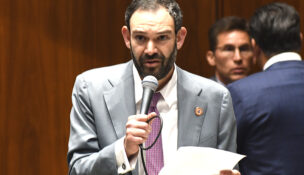Governor: Meth is No. 1 drug problem
Arizona Capitol Reports Staff//May 11, 2007//[read_meter]
A state task force has recommended an expansive three-prong enforcement, treatment and prevention approach to address Arizona’s methamphetamine crisis, which Gov. Janet Napolitano called the state’s “No. 1 drug problem.”...
No tags for this post.

















